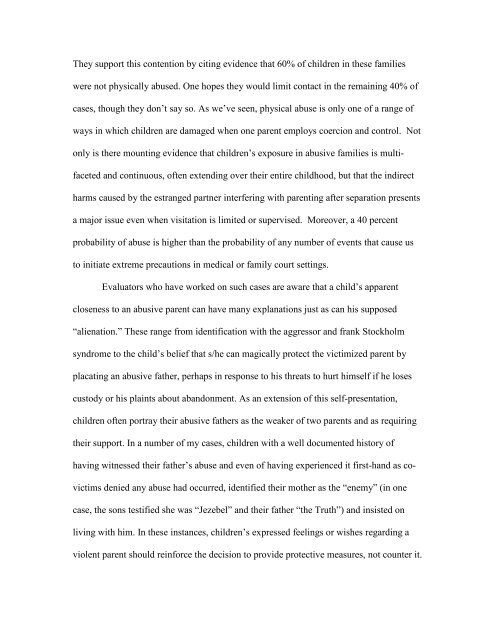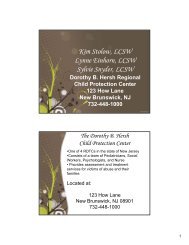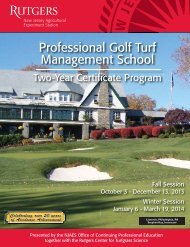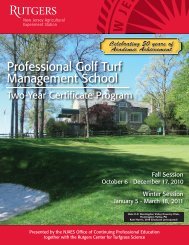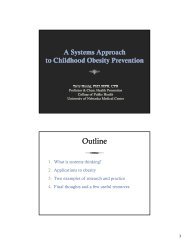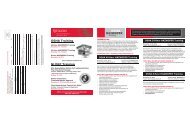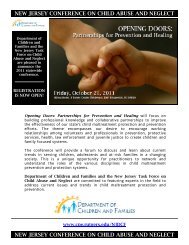Rethinking Child Custody, Domestic Violence - Rutgers NJAES ...
Rethinking Child Custody, Domestic Violence - Rutgers NJAES ...
Rethinking Child Custody, Domestic Violence - Rutgers NJAES ...
You also want an ePaper? Increase the reach of your titles
YUMPU automatically turns print PDFs into web optimized ePapers that Google loves.
They support this contention by citing evidence that 60% of children in these familieswere not physically abused. One hopes they would limit contact in the remaining 40% ofcases, though they don’t say so. As we’ve seen, physical abuse is only one of a range ofways in which children are damaged when one parent employs coercion and control. Notonly is there mounting evidence that children’s exposure in abusive families is multifacetedand continuous, often extending over their entire childhood, but that the indirectharms caused by the estranged partner interfering with parenting after separation presentsa major issue even when visitation is limited or supervised. Moreover, a 40 percentprobability of abuse is higher than the probability of any number of events that cause usto initiate extreme precautions in medical or family court settings.Evaluators who have worked on such cases are aware that a child’s apparentcloseness to an abusive parent can have many explanations just as can his supposed“alienation.” These range from identification with the aggressor and frank Stockholmsyndrome to the child’s belief that s/he can magically protect the victimized parent byplacating an abusive father, perhaps in response to his threats to hurt himself if he losescustody or his plaints about abandonment. As an extension of this self-presentation,children often portray their abusive fathers as the weaker of two parents and as requiringtheir support. In a number of my cases, children with a well documented history ofhaving witnessed their father’s abuse and even of having experienced it first-hand as covictimsdenied any abuse had occurred, identified their mother as the “enemy” (in onecase, the sons testified she was “Jezebel” and their father “the Truth”) and insisted onliving with him. In these instances, children’s expressed feelings or wishes regarding aviolent parent should reinforce the decision to provide protective measures, not counter it.


